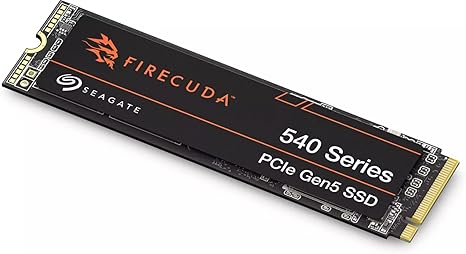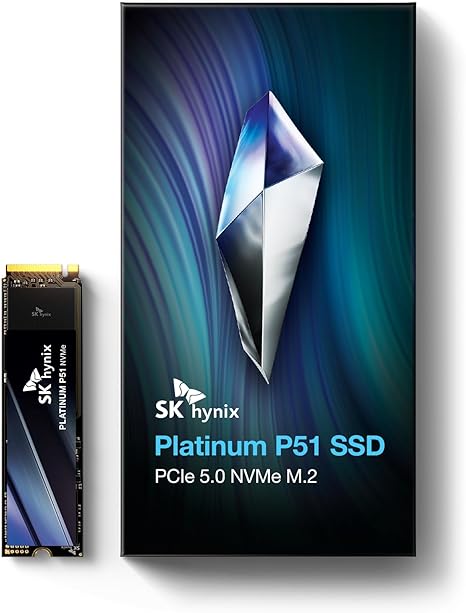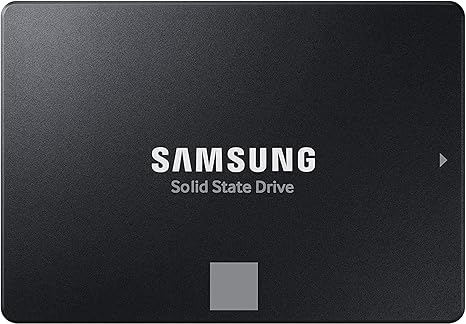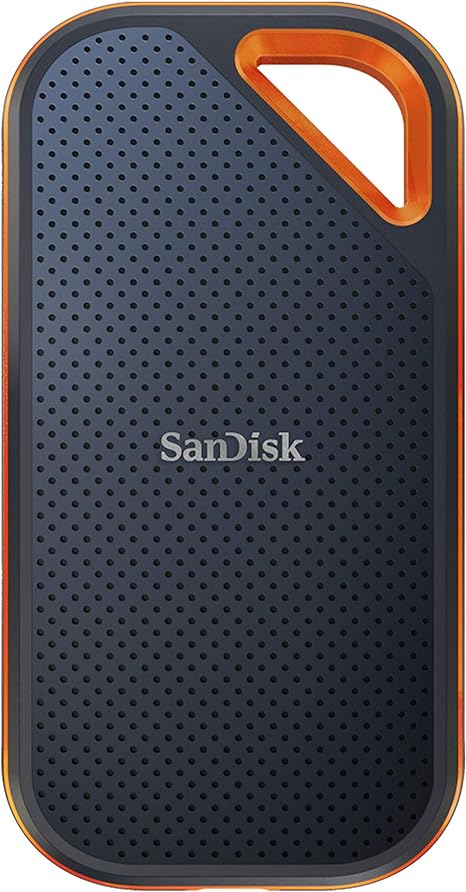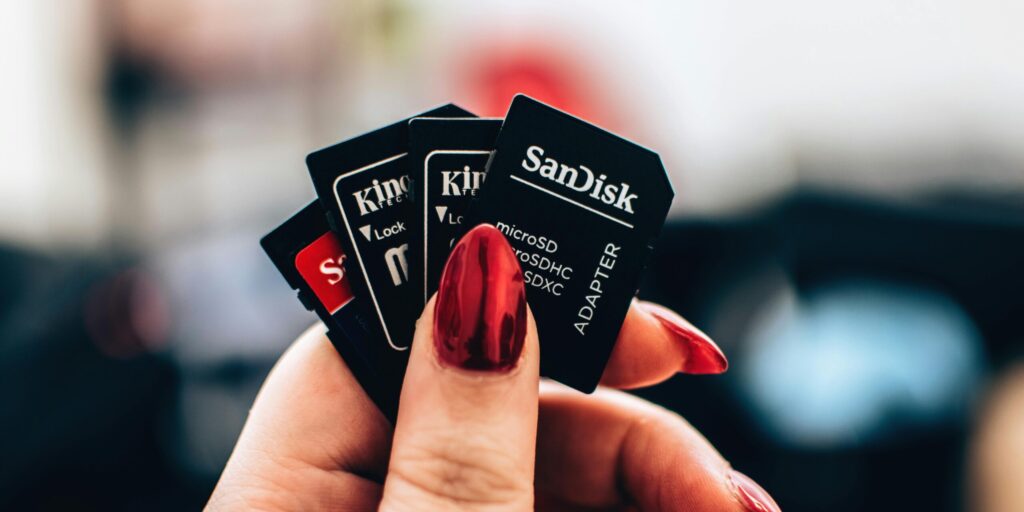We independently review everything we recommend. We may make money from the links on our site.
The Best SSDs

In today’s fast-paced digital world, system performance is everything. Whether you’re a professional content creator, an avid gamer, or simply tired of waiting for applications to load, upgrading to a solid-state drive (SSD) is arguably the most impactful improvement you can make to your computing experience. But with countless options flooding the market, how do you identify which SSD truly deserves your hard-earned money?
This comprehensive guide breaks down the absolute best SSDs available right now, balancing performance, reliability, and value to help you make an informed decision that you won’t regret. From blazing-fast PCIe 5.0 drives to budget-friendly options that don’t compromise on quality, we’ve researched and tested the market’s top contenders to bring you the definitive list
Everything We Recommend
Top Pick
The Best Overall
The Samsung 990 PRO stands as the undisputed champion in the SSD market for a reason,ffering blazing speeds (7,450/6,900 MB/s), excellent thermal control, and a high endurance of 2,400 TBW. It’s perfect for gamers and creators needing fast, reliable, long-lasting storage.
Buying Options
Value
The Best Value
Not everyone needs (or can afford) the absolute fastest SSDs on the market. The Crucial P3 Plus strikes an excellent balance between performance and affordability.
Buying Options
For Gaming
The Best for Gaming
Seagate’s FireCuda 540 is specifically engineered with gamers in mind. The drive features Seagate’s GameDrive architecture that prioritizes game asset loading and texture streaming, reducing in-game stuttering and virtually eliminating loading screens in many titles.
Buying Options
For Laptops
The Best for Laptops
Laptop users have unique requirements—battery efficiency, low heat output, and compact design are just as important as raw speed. The SK hynix Platinum P51 excels in all these areas, making it the ideal choice for mobile computing.
Buying Options
SATA SSD
The Best SATA SSD
While NVMe drives dominate performance discussions, many users still rely on SATA connections for compatibility with older systems or for secondary storage. The Samsung 880 EVO pushes the SATA interface to its theoretical limits while offering exceptional reliability and capacity options up to 4TB.
Buying Options
Portable SSD
The Best Portable SSD
For those who need performance on the go, the SanDisk Extreme Pro V2 delivers desktop-class speeds in a rugged, portable package. With USB 3.2 Gen 2×2 support, this external SSD achieves transfer rates up to 2,000 MB/s—fast enough to edit 4K video directly from the drive.
Buying Options
What Is an SSD and Why Do You Need One?
Solid-state drives use flash memory chips to store data, unlike traditional hard drives that rely on spinning magnetic disks. This fundamental difference gives SSDs significant advantages:
- Speed: SSDs can read and write data up to 10x faster than HDDs
- Reliability: No moving parts means fewer potential failure points
- Durability: Better resistance to physical shock and vibration
- Energy efficiency: Lower power consumption and heat generation
- Silent operation: No spinning disks means no noise
Whether you’re building a new computer, upgrading an older system, or expanding your storage capacity, installing an SSD is one of the most impactful upgrades you can make. The performance boost is immediately noticeable in everything from boot times to application loading and file transfers.
Types of SSDs Explained
Understanding the different SSD form factors and interfaces is crucial for selecting the right drive for your system.
SATA SSDs
SATA SSDs connect through the same interface as traditional hard drives, making them widely compatible with older systems.
Pros:
- Universal compatibility
- Easy installation
- More affordable than NVMe options
- Available in 2.5-inch form factor that fits in most laptops and desktops
Cons:
- Speed limited by the SATA interface (up to ~550 MB/s)
- Older technology being gradually phased out in newer systems
NVMe SSDs
NVMe (Non-Volatile Memory Express) SSDs connect directly to the PCIe bus, bypassing the limitations of SATA.
Pros:
- Significantly faster speeds (up to 7,000 MB/s for PCIe 4.0)
- Lower latency
- More efficient protocol designed specifically for flash storage
- Available in M.2 form factor that takes up minimal space
Cons:
- Requires motherboard with M.2 slot for M.2 drives
- Generally more expensive than SATA equivalents
- May require BIOS updates on older systems
M.2 vs. PCIe Add-in Cards
M.2 is the most common form factor for NVMe drives today, but PCIe add-in cards offer alternatives for specific use cases.
M.2 SSDs:
- Compact “gum stick” size
- Direct motherboard connection
- Available in different lengths (2242, 2260, 2280, 22110)
- Can use either SATA or NVMe protocol (check specifications)
PCIe Add-in Cards:
- Install in PCIe expansion slots
- Often used for enterprise or specialized high-performance applications
- Can sometimes host multiple M.2 drives on a single card
- May offer better cooling solutions for sustained performance
External SSDs
External SSDs provide portable storage with much better performance than traditional external hard drives.
Connection Types:
- USB 3.2 Gen 1 (up to 5 Gbps)
- USB 3.2 Gen 2 (up to 10 Gbps)
- USB 3.2 Gen 2×2 (up to 20 Gbps)
- Thunderbolt 3/4 (up to 40 Gbps)
The actual speeds you’ll experience depend on both the drive’s internal capabilities and the connection type.
Key Specifications to Consider
When comparing SSDs, pay attention to these important specifications:
Storage Capacity
SSDs commonly range from 250GB to 4TB, with larger capacities becoming more affordable each year. Consider:
- 250-500GB: Suitable for operating system and essential applications
- 1TB: Good balance for most users (OS, applications, games, media)
- 2TB+: Ideal for content creators, large game libraries, or media collections
Speed Ratings
SSD speed is typically measured in sequential read/write speeds:
- SATA SSDs: ~550 MB/s maximum
- PCIe 3.0 NVMe: 3,000-3,500 MB/s
- PCIe 4.0 NVMe: 5,000-7,000 MB/s
- PCIe 5.0 NVMe: Up to 14,000 MB/s (emerging technology)
However, random read/write performance (measured in IOPS) is often more important for everyday tasks. Look for drives with strong 4K random performance in benchmarks.
Endurance (TBW)
Terabytes Written (TBW) indicates how much data can be written to the drive before cells begin to wear out:
- Consumer drives: 150-600 TBW per 1TB of capacity
- Professional/prosumer drives: 600-1,200 TBW per 1TB
- Enterprise drives: 1,000-3,600 TBW per 1TB
For most home users, even basic consumer drives offer sufficient endurance to last 5+ years under normal usage.
NAND Type
The type of flash memory used affects performance, endurance, and cost:
- SLC (Single-Level Cell): Fastest and most durable, but prohibitively expensive
- MLC (Multi-Level Cell): Good balance but increasingly rare
- TLC (Triple-Level Cell): Current mainstream standard offering good performance/price ratio
- QLC (Quad-Level Cell): Higher capacity, lower cost, but reduced endurance and performance
- PLC (Penta-Level Cell): Newest type with highest density but lowest endurance
Most consumer SSDs now use TLC or QLC NAND with sophisticated controllers and caching mechanisms to optimize performance.
DRAM Cache
Higher-end SSDs include DRAM cache memory that significantly improves performance for certain workloads:
- DRAM-equipped drives: Better sustained write speeds and random access performance
- DRAM-less drives: More affordable but may slow down during large file transfers or intense workloads
For primary boot drives or workstation use, DRAM-equipped drives are recommended. For secondary storage or light usage, DRAM-less options can offer better value.
Our Top SSD Recommendations
After extensive testing and research, here are our top recommendations across different categories:
The Samsung 990 PRO stands as the undisputed champion in the SSD market for a reason. With sequential read speeds reaching an impressive 7,450 MB/s and write speeds of 6,900 MB/s, this PCIe 4.0 NVMe drive delivers exceptional performance across all usage scenarios. The proprietary Samsung Elpis controller manages heat efficiently, ensuring sustained performance even during intensive tasks.
What truly sets the 990 PRO apart is its exceptional endurance rating of up to 2,400 TBW (Terabytes Written) for the 4TB model, providing peace of mind for those who demand reliability alongside raw speed. Samsung’s sophisticated Dynamic Thermal Guard technology prevents performance throttling, maintaining optimal operation temperatures even under heavy workloads.
Key Specifications:
- Interface: PCIe 4.0 x4, NVMe 2.0
- Form Factor: M.2 2280
- Sequential Read/Write: 7,450/6,900 MB/s
- Random Read/Write: 1,400K/1,550K IOPS
- Endurance: 2,400 TBW (4TB model)
- Warranty: 5-year limited
Not everyone needs (or can afford) the absolute fastest SSDs on the market. The Crucial P3 Plus strikes an excellent balance between performance and affordability. With speeds that far outpace any SATA drive while costing just marginally more, this PCIe 4.0 drive delivers exceptional value.
The P3 Plus achieves sequential read speeds of 5,000 MB/s and write speeds of 3,600 MB/s—more than adequate for most users’ daily computing needs including gaming, productivity, and general multitasking. Crucial’s dynamic write acceleration technology helps maintain consistent performance throughout the drive’s lifespan.
Key Specifications:
- Interface: PCIe 4.0 x4, NVMe 1.4
- Form Factor: M.2 2280
- Sequential Read/Write: 5,000/3,600 MB/s
- Random Read/Write: 650K/900K IOPS
- Endurance: 600 TBW (1TB model)
- Warranty: 5-year limited
Seagate’s FireCuda 540 is specifically engineered with gamers in mind. The drive features Seagate’s GameDrive architecture that prioritizes game asset loading and texture streaming, reducing in-game stuttering and virtually eliminating loading screens in many titles.
Beyond raw speed, the FireCuda 540 includes Seagate’s GameMode Pro software that automatically optimizes system resources during gameplay. The drive’s integrated RGB lighting can sync with popular gaming peripherals through major RGB ecosystems, adding a customizable aesthetic element to your gaming rig.
Key Specifications:
- Interface: PCIe 4.0 x4, NVMe 1.4
- Form Factor: M.2 2280
- Sequential Read/Write: 7,300/6,900 MB/s
- Random Read/Write: 1,000K/1,200K IOPS
- Endurance: 1,400 TBW (2TB model)
- Warranty: 5-year limited with data recovery services
Laptop users have unique requirements—battery efficiency, low heat output, and compact design are just as important as raw speed. The SK hynix Platinum P51 excels in all these areas, making it the ideal choice for mobile computing.
This drive consumes up to 30% less power than comparable NVMe SSDs while still delivering excellent performance with sequential read speeds of 6,500 MB/s. The proprietary “Cool Guard” technology spreads heat efficiently throughout the drive’s thin profile, preventing thermal throttling even in laptops with limited cooling capacity.
Key Specifications:
- Interface: PCIe 4.0 x4, NVMe 1.4
- Form Factor: M.2 2280 (slim profile)
- Sequential Read/Write: 6,500/5,300 MB/s
- Random Read/Write: 900K/1,100K IOPS
- Endurance: 750 TBW (1TB model)
- Warranty: 5-year limited
While NVMe drives dominate performance discussions, many users still rely on SATA connections for compatibility with older systems or for secondary storage. The Samsung 870 EVO pushes the SATA interface to its theoretical limits while offering exceptional reliability and capacity options up to 4TB.
Samsung’s refined 6th-generation V-NAND technology delivers consistent performance throughout the drive’s lifespan, while the upgraded MKX controller improves encryption performance and power efficiency compared to previous models.
Key Specifications:
- Interface: SATA III (6 Gb/s)
- Form Factor: 2.5-inch
- Sequential Read/Write: 560/530 MB/s
- Random Read/Write: 98K/88K IOPS
- Endurance: 2,400 TBW (4TB model)
- Warranty: 5-year limited
For those who need performance on the go, the SanDisk Extreme Pro delivers desktop-class speeds in a rugged, portable package. With USB 3.2 Gen 2×2 support, this external SSD achieves transfer rates up to 2,000 MB/s—fast enough to edit 4K video directly from the drive.
The forged aluminum chassis acts as a heat sink and provides IP55 water and dust resistance. A carabiner loop and the compact form factor enhance portability, while hardware encryption protects sensitive data when traveling.
Key Specifications:
- Interface: USB 3.2 Gen 2×2 (20Gbps)
- Form Factor: External portable
- Sequential Read/Write: 2,000/1,900 MB/s
- Protection Rating: IP55 (water and dust resistant)
- Shock Resistance: Up to 2-meter drops
- Warranty: 5-year limited
How to Install an SSD
Installing an SSD is generally straightforward, but the process varies depending on the type:
2.5-inch SATA SSD Installation
- Power down your computer and unplug all cables
- Open the computer case or laptop access panel
- Locate an available drive bay or mounting position
- Connect the SATA data cable to the motherboard
- Connect a power cable from the power supply
- Secure the drive in place using screws or mounting brackets
- Close the case and restart the system
- Initialize the drive in Disk Management (Windows) or Disk Utility (Mac)
M.2 NVMe SSD Installation
- Power down your computer and unplug all cables
- Open the computer case or laptop access panel
- Locate the M.2 slot on your motherboard
- Check if a heat spreader needs to be removed first
- Insert the M.2 drive at a 30-degree angle into the slot
- Press down gently and secure with the retention screw
- Replace any heat spreaders or covers
- Close the case and restart the system
- Initialize the drive in operating system if needed
Migrating Your Operating System to an SSD
Upgrading to an SSD often means transferring your existing operating system. Here are the main approaches:
Using Cloning Software
- Connect both your old drive and new SSD to your computer
- Use cloning software like Macrium Reflect, Samsung Data Migration, or Acronis True Image
- Select your source (old) drive and destination (new SSD)
- Start the cloning process and wait for completion
- Adjust partition sizes if needed
- Set the SSD as the boot drive in BIOS/UEFI
Fresh Installation
For the cleanest experience, consider a fresh installation:
- Back up all important data
- Create installation media for your operating system
- Install the SSD in your computer
- Boot from the installation media
- Install the operating system on the SSD
- Reinstall your applications
- Restore your backed-up data
Maintaining SSD Performance Long-Term
To ensure your SSD continues to perform optimally:
Enable TRIM
TRIM allows the operating system to inform the SSD which blocks of data are no longer in use and can be wiped internally. This helps maintain performance over time.
- Windows: Usually enabled by default, check with
fsutil behavior query DisableDeleteNotifyin Command Prompt - macOS: Enabled by default since OS X 10.6.8
- Linux: Can be enabled with the
discardmount option or periodic TRIM
Keep Firmware Updated
Manufacturers regularly release firmware updates that can improve performance, compatibility, and reliability:
- Use the manufacturer’s SSD management software (Samsung Magician, Crucial Storage Executive, WD Dashboard, etc.)
- Check for updates quarterly or when experiencing issues
Monitor Drive Health
All SSDs have limited write endurance. Monitor your drive’s health with:
- Manufacturer’s SSD tools
- Third-party software like CrystalDiskInfo
- S.M.A.R.T. monitoring utilities
Maintain Free Space
SSDs perform best when they have some free space (ideally 10-20%) for background operations like garbage collection.
Avoid Unnecessary Writes
While modern SSDs are much more durable than early models, minimizing unnecessary writes can still extend lifespan:
- Disable hibernation if you don’t need it
- Move frequently written temporary files to a RAM disk
- Consider disabling the page file only if you have ample RAM
Common SSD Questions Answered
Are SSDs Worth the Price Premium Over HDDs?
Yes, for most users. The performance improvement is substantial enough to transform the computing experience. Boot times, application loading, and file operations that took minutes on HDDs take seconds on SSDs. Prices have fallen dramatically—a 1TB SSD now costs what a 240GB model did just a few years ago.
How Long Do SSDs Last?
Modern SSDs typically last 5-10 years under normal desktop or laptop use. Enterprise-grade drives can last even longer. The TBW (Terabytes Written) rating provides a good estimate of minimum endurance, but most drives exceed these conservative ratings substantially.
Should I Get NVMe or SATA?
If your system supports NVMe, it’s almost always the better choice. NVMe drives offer 5-10x the performance of SATA drives for sequential operations and 2-3x for random operations. The price difference has narrowed to the point where SATA makes sense only for budget builds or when adding storage to systems without M.2 slots.
Does SSD Speed Matter for Gaming?
SSD speed primarily affects game loading times, not in-game performance (FPS). The difference between a SATA SSD and high-end NVMe drive is often just seconds for game loading. However, technologies like DirectStorage (Windows) are beginning to leverage fast NVMe drives for improved texture streaming and reduced load times.
What About QLC vs. TLC NAND?
TLC offers better performance and endurance but at a higher cost per gigabyte. QLC allows for higher capacities at lower prices but with some performance trade-offs, particularly for sustained write operations. For most home users, modern QLC drives with good caching mechanisms perform adequately for everyday tasks.
Conclusion
Solid-state drives represent one of the most significant advancements in computing performance of the past decade. Whether you choose a budget-friendly SATA drive or a cutting-edge PCIe 5.0 NVMe model, the improvement over traditional hard drives is transformative.
For most users, we recommend:
- Primary drive: 1TB NVMe SSD (Samsung 990 Pro )
- Budget build: 500GB-1TB Crucial P3 Plus
- Legacy systems: Samsung 870 EVO SATA SSD
When making your selection, prioritize reliability and real-world performance over benchmark numbers. A slightly slower drive from a reputable manufacturer with good warranty support is often the better long-term choice compared to an unknown brand with marginally better specifications.
As SSD technology continues to evolve, prices will fall further while capacities and speeds increase.Therefore, it is a great time to upgrade your storage solution.


